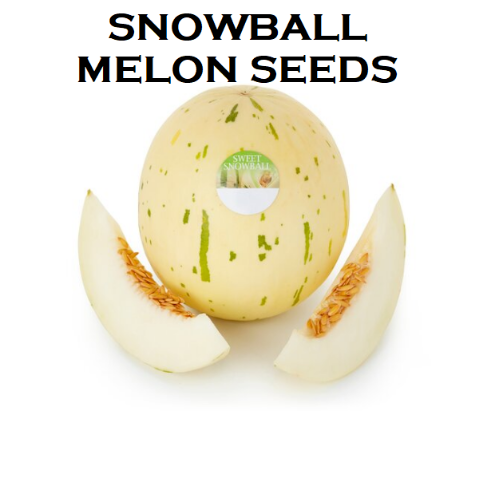Angell Inc London
RARE SEEDS Grow your own GIANT White Snow Ball Melon Sweetest Dino Honey Fruit
RARE SEEDS Grow your own GIANT White Snow Ball Melon Sweetest Dino Honey Fruit
Couldn't load pickup availability
EASY TO GROW MELON SEEDS 1 pack of 10 x SNOWBALL Melon Seeds IN PLASTIC PACK Fill your fruit bowl, with fresh fruit straight from your garden. Comes with No Growing instruction's. Please read tips for growing here. Indoor Planting: Sow the seeds 1.5mm deep in trays of moist compost, be careful not to over water. Store in a warm place not in direct sunlight and ensure the compost is kept moist. It is a good idea to cover with a plastic bag until the seeds germinate. Once the seedlings appear, remove the plastic. It is also useful to label the trays for future reference. Growing On: When the seedlings are strong enough to handle they can be transplanted into bigger pots or trays. Be careful when easing the roots out, as they can be easily be damaged. Do not overcrowded the plants. Keep the pots warm, light position and turn regularly. Once all chance of frost has passed the plants can be transplanted outside into growing beds outside Outdoor Planting: March– July Melons are tender plants, so need a warm, sunny spot with high humidity. In the UK it is best to grow in a glasshouse, polytunnel or under a cloche or in a cold frame. Melons need a rich, fertile, moisture retentive, deep and well-drained soil. Three to four weeks before planting, prepare the ground by removing weeds and incorporating up to two bucketfuls of organic matter and a modest dressing of general purpose fertiliser. Water well and cover in clear polythene for a week before planting to warm the soil. Pinch out the growing point at the fifth leaf to encourage side shoots, when they appear, retain the four strongest and remove the others. In a cold frame, train the four shoots into an X shape. Under cloches, train one pair each way. In very sunny weather, shade indoor crops with netting or whitewash on the glass. Keep well watered at all times. When fruit are the size of walnuts, feed with a high potash potassium liquid fertiliser every 7-10 days. Stop feeding and reduce watering when the fruits start to ripen and foliage dies back. Increase ventilation and remove shading once plants become established, but remember to re-apply shading later in summer if temperatures exceed 25ºC. Pollination Make sure you ventilate when the plants are in flower, as this will allow simultaneous pollination of fruits. It’s best not to pollinate by hand as the small flowers are delicate, but occasionally it might be necessary - female flowers have a small undeveloped ‘fruit’ behind them; male flowers do not. One male flower pollinates four females. Ripening When fruit are gooseberry size, select the best four on each stem and remove all other flowers, fruit and leaves. Stop the side shoots two or three leaves beyond these fruits, pinch out the main growing tips and remove new growths as they appear. Place the fruit on a tile or piece of wood to prevent discolouration or even rotting. |
Share

Collections
-

Rare Fruit, Vegetable & Tropical Tree Seeds (UK)
Grow something different. Explore our rare and heirloom seeds across vegetables, fruit...
-

Dress Jewellery Gifts – Necklaces, Bracelets, Anklets & Body Jewellery
Add sparkle without the price tag. Explore dress jewellery gifts for every...
-

Personalised Pet Gifts for Dogs & Cats
Make their tail wag. Explore personalised pet gifts for dogs and cats—embroidered...
-

Designer Hats – Beanies, Bucket, Flat Caps, Cowboy & Pom-Pom
Stay warm, look sharp. Explore designer hats for men & women—knitted beanies,...
-

Personalised Christmas Stockings, Sacks & Baubles
Make Christmas feel personal. Our collection of personalised Christmas stockings and Xmas...
-

Personalised Gifts – For Everyone
Make it personal. Explore personalised gifts for everyone — embroidered hats & headbands, baby gifts, car accessories, seat‑belt...
-

Personalised Baby Gifts – Newborn & Baby Shower
Personalised Baby Gifts for Newborns Girls & Boys Childrens Presents with Embroidered...








